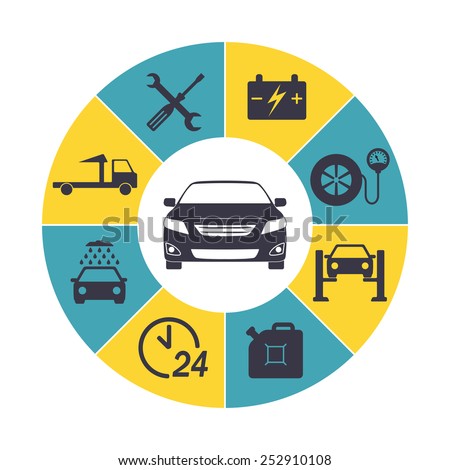Recognizing Your Auto'S Warning Lights: What Do They Really Mean?
Recognizing Your Auto'S Warning Lights: What Do They Really Mean?
Blog Article
Uploaded By-Boye Gilbert
When you lag the wheel, those glowing caution lights on your dashboard can be a little bit perplexing. Do you know what they're attempting to tell you about your automobile's health and wellness? Comprehending the value of these lights is essential for your security and the durability of your vehicle. So, the following time one of those lights turns up, would not you intend to decode its message accurately and take the essential actions to address it?
Common Caution Lighting and Interpretations
Determine typical warning lights in your auto and comprehend their definitions to make sure risk-free driving.
One of the most regular caution lights consist of the check engine light, which signals concerns with the engine or emissions system. If this light comes on, it's vital to have your automobile examined without delay.
The oil stress warning light indicates reduced oil pressure, needing prompt focus to prevent engine damages.
A blinking battery light might recommend a defective billing system, possibly leaving you stranded if not resolved.
The tire pressure surveillance system (TPMS) light notifies you to reduced tire pressure, affecting automobile stability and fuel efficiency. Ignoring aj detailing can cause dangerous driving conditions.
The ABS light indicates a trouble with the anti-lock stopping system, jeopardizing your ability to stop promptly in emergencies.
Lastly, the coolant temperature level warning light warns of engine getting too hot, which can result in serious damages if not fixed swiftly.
Understanding these usual warning lights will certainly aid you resolve issues immediately and maintain risk-free driving conditions.
Significance of Prompt Attention
Recognizing the typical caution lights in your car is only the first step; the value of promptly addressing these cautions can not be emphasized sufficient to ensure your safety when traveling.
When a caution light illuminates on your control panel, it's your auto's method of communicating a potential problem that requires attention. Overlooking these cautions can lead to a lot more severe troubles down the road, compromising your safety and security and possibly costing you extra in repairs.
Prompt interest to cautioning lights can stop breakdowns and crashes. As https://driverstrainingnearme51738.theideasblog.com/30660993/an-essential-referral-for-the-crucial-devices-located-in-every-vehicle-repair-service-facility-uncovering-the-techniques-for-efficient-automobile-upkeep , a blinking check engine light could suggest a misfire that, if left unattended, could cause damages to the catalytic converter. Addressing this quickly can save you from an expensive repair.
In https://ecu-tuning-software-free39406.mdkblog.com/35915672/revealing-the-keys-of-a-first-class-vehicle-service-center-experience , a brake system advising light could signal reduced brake fluid or used brake pads, vital components for your security when driving.
Do It Yourself Troubleshooting Tips
If you discover a warning light on your control panel, there are a few DIY fixing pointers you can try prior to looking for specialist aid.
The primary step is to consult your vehicle's guidebook to recognize what the particular caution light suggests. In some cases the concern can be as straightforward as a loose gas cap triggering the check engine light. Tightening up the gas cap may solve the trouble.
One more common problem is a low battery, which can activate different alerting lights. Examining the battery links for rust and guaranteeing they're safe could fix the problem.
If a warning light continues, you can attempt resetting it by separating the automobile's battery for a few minutes and afterwards reconnecting it. In addition, checking your car's liquid degrees, such as oil, coolant, and brake fluid, can assist troubleshoot alerting lights associated with these systems.
Final thought
In conclusion, recognizing your car's warning lights is vital for keeping your lorry running smoothly and safely. By immediately resolving these informs and recognizing what they mean, you can prevent costly repair services and prospective failures.
Remember to consult your vehicle's manual for particular information on each cautioning light and do something about it as necessary to ensure a hassle-free driving experience.
Keep informed, stay secure when driving!
